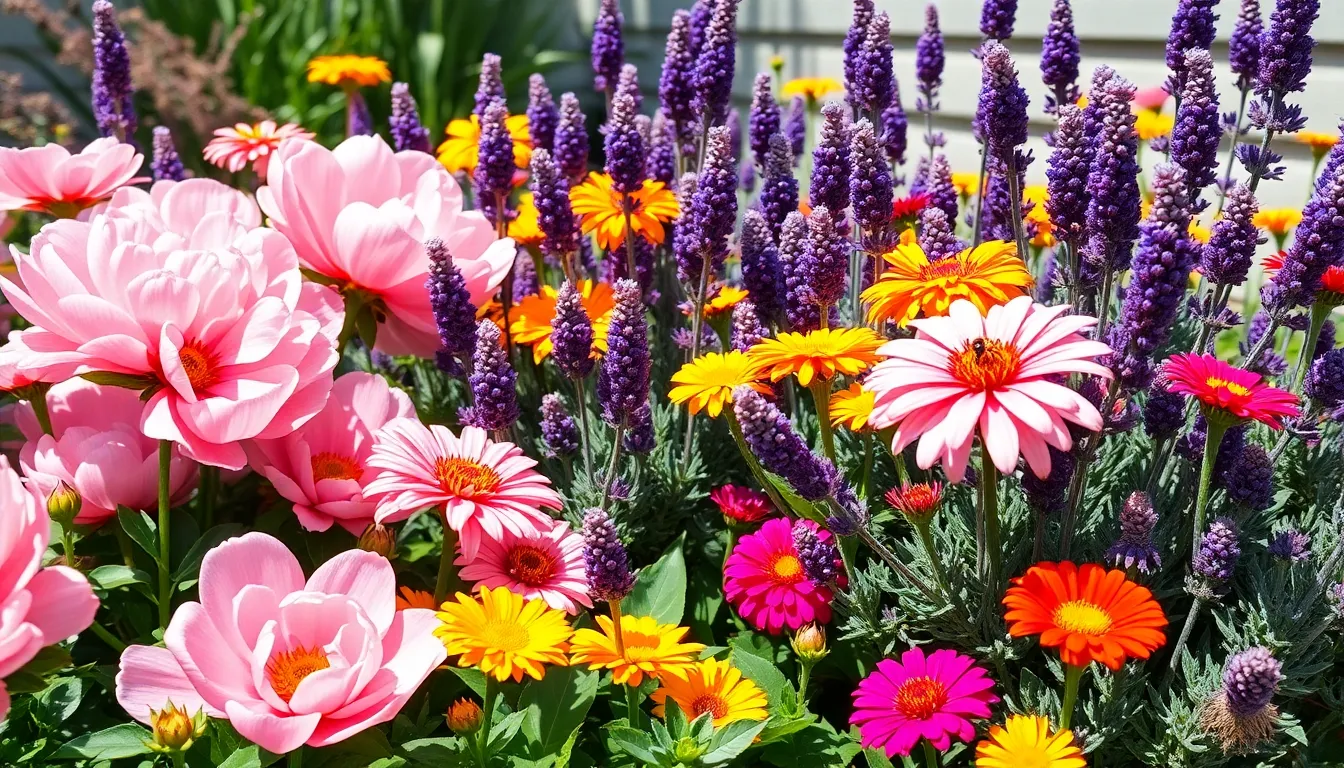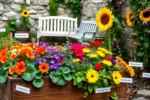Imagine stepping into your garden and being greeted by a harmonious symphony of colors and textures that dance together in delightful unity. Whether you’re just beginning your gardening journey or have years of soil under your fingernails, crafting stunning flower combinations is an art that can transform any green space into a vibrant, living masterpiece. In this article, we’ll delve into the enchanting world of garden flower combos, unveiling the secrets to pairing blooms that not only thrive together but also elevate the aesthetic appeal of your garden.
As you read on, you will discover how to select flowers that complement each other in both hue and habit, creating a balanced and breathtaking display. We’ll explore tried-and-true pairings that have charmed gardeners for generations, as well as innovative combinations that push the boundaries of traditional garden design. By the end of this guide, you’ll be equipped with the knowledge and inspiration to create your own stunning floral arrangements, ensuring your garden becomes a source of pride and joy.
Understanding the intricacies of flower pairing is not just about visual appeal—it’s also essential for fostering a garden where all plants can thrive harmoniously. We’ll guide you through the process of considering growth habits, soil preferences, and light requirements to ensure your combinations flourish. This approach ensures that your garden is not only beautiful but sustainable, offering a thriving environment for every plant.
Choosing Complementary Color Schemes
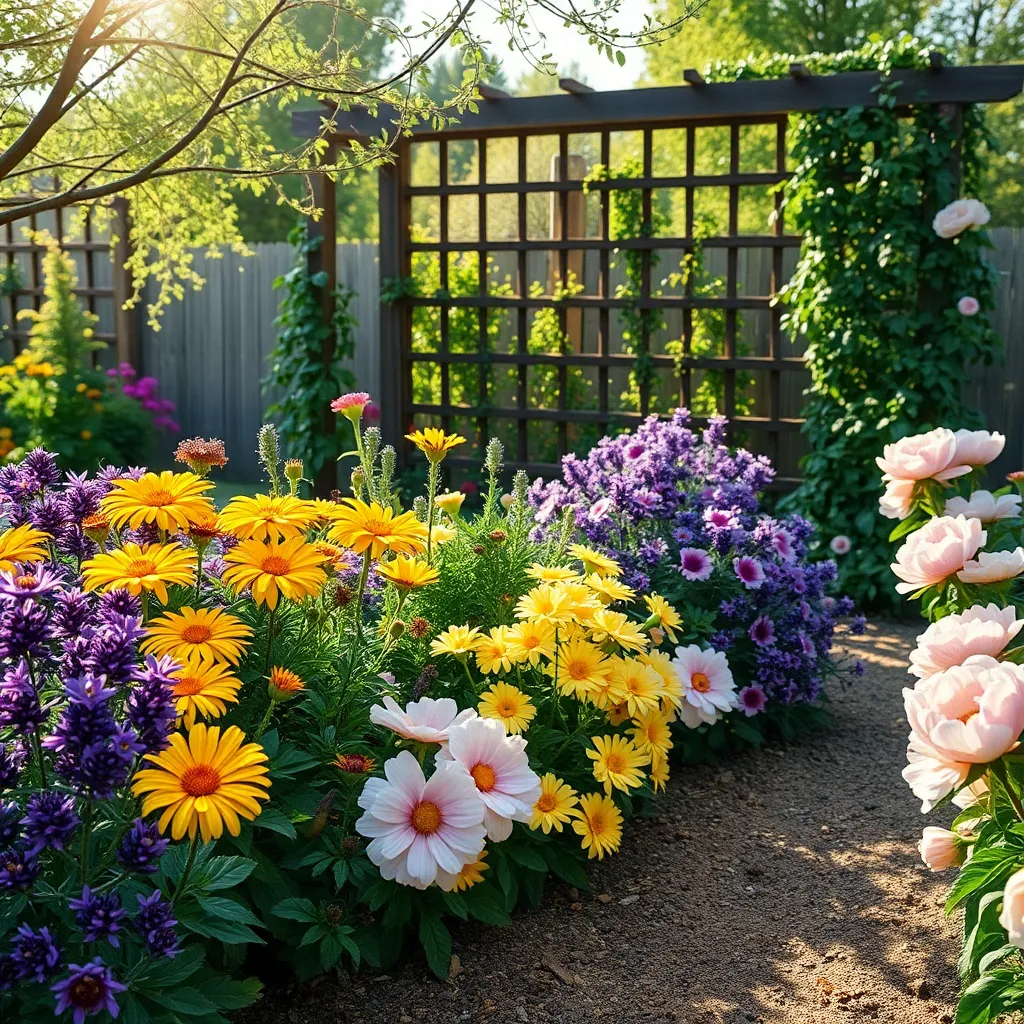
When choosing a complementary color scheme for your garden, consider starting with a color wheel to identify hues that naturally enhance each other. For instance, pairing blue delphiniums with orange marigolds can create a vibrant, eye-catching contrast that stands out beautifully.
It’s important to think about the bloom time of your plants to ensure continuous color throughout the growing season. Combining early-blooming tulips with later-blooming dahlias ensures that your garden remains colorful and engaging from spring through fall.
Soil type and sunlight requirements are crucial when planning your complementary color scheme. Planting red roses, which thrive in well-drained soil and full sun, alongside purple lavender, which prefers the same conditions, can create a harmonious and healthy garden bed.
For a more advanced approach, consider the texture and form of your plants in addition to their color. Mixing the bold, upright form of yellow sunflowers with the soft, cascading habit of blue lobelia adds depth and interest to your garden design.
Mixing Perennials and Annuals
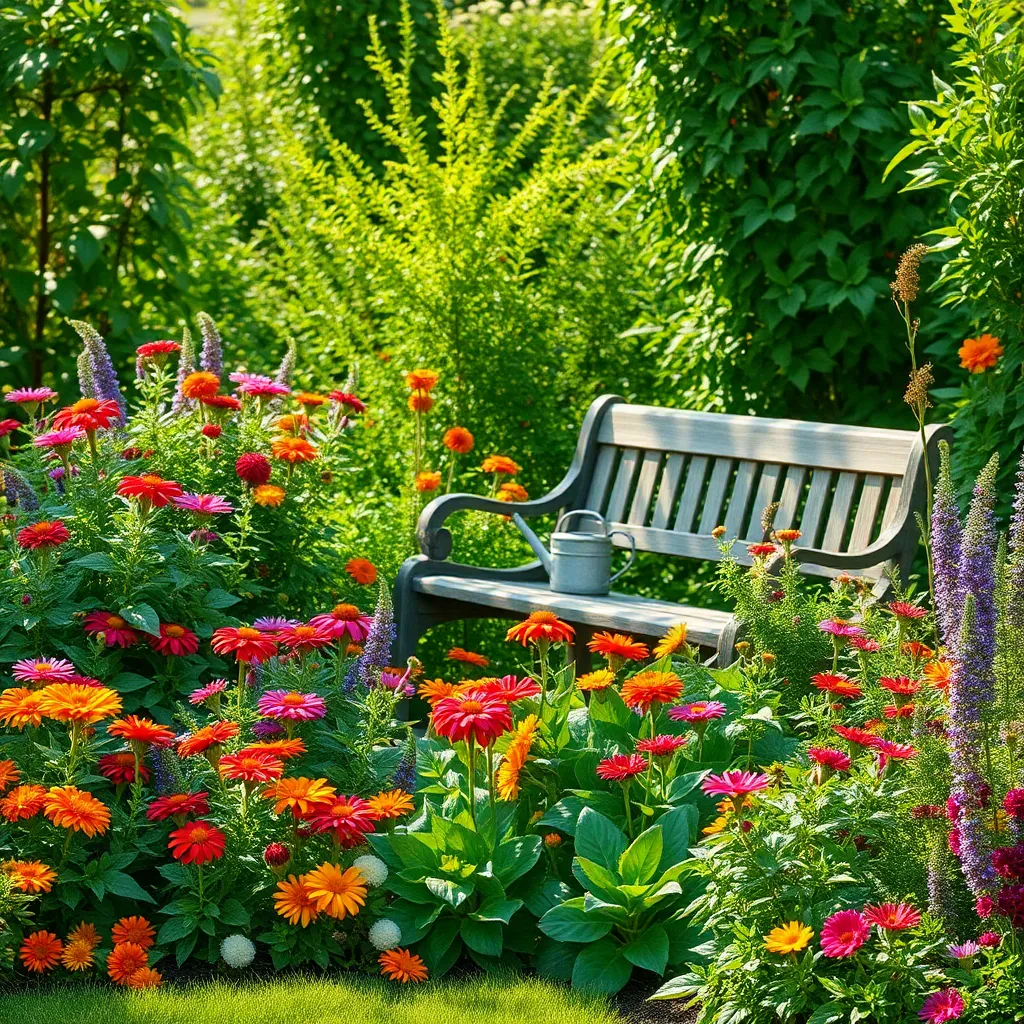
Integrating perennials and annuals creates dynamic flower beds that evolve throughout the year. While perennials provide structure and reliability, annuals offer bursts of color and can be changed seasonally for fresh appeal.
If you’re new to mixing these plant types, start by choosing perennials that match your garden’s soil and light conditions, such as well-draining loam and full sun. Consider adding annuals like petunias or marigolds for pops of color; they thrive in similar conditions and will fill gaps as perennials establish.
Experienced gardeners can experiment with advanced layering techniques, positioning taller perennials like coneflowers at the back and shorter annuals in front. This approach not only maximizes visual interest but also ensures each plant receives the necessary sunlight and air circulation.
Regular maintenance is key to a vibrant garden—prune back perennials in early spring and deadhead annuals throughout the growing season to encourage more blooms. Fertilize both types of plants with a balanced, slow-release formula to support healthy growth and a continuous display of flowers.
Seasonal Blooms for Year-Round Beauty
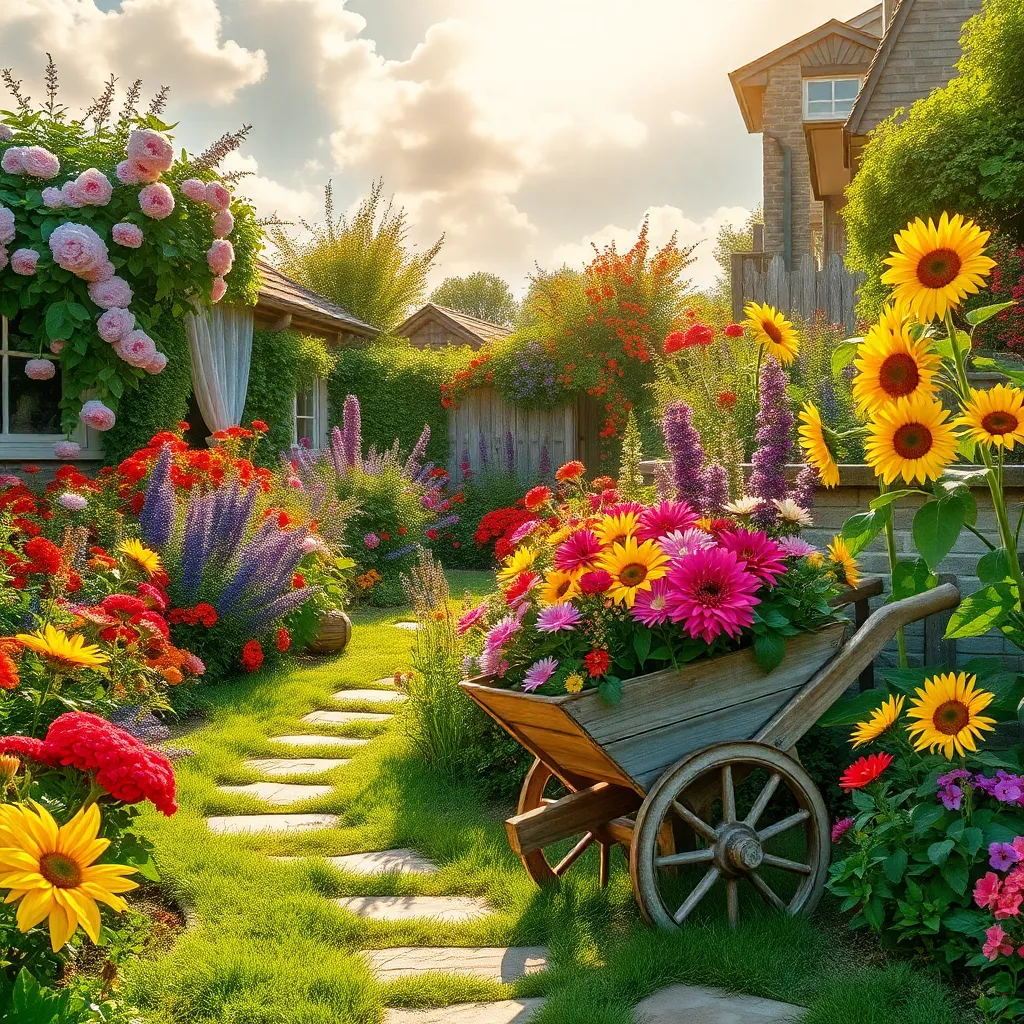
To achieve year-round beauty in your garden, consider planting a variety of seasonal blooms that thrive at different times of the year. This approach not only ensures continuous color but also attracts a diverse array of pollinators, benefiting both your plants and the local ecosystem.
Begin by selecting spring-blooming bulbs such as tulips and daffodils, which can be planted in the fall for a vibrant spring display. These bulbs prefer well-drained soil and a sunny spot, so make sure to amend your soil with compost if it’s too clay-heavy.
For the summer months, consider planting a mix of perennials like daylilies and annuals such as zinnias. Daylilies thrive in full sun and require moderate watering, while zinnias are drought-tolerant and can handle less frequent irrigation, making them perfect for hot summer days.
As autumn approaches, think about introducing chrysanthemums and asters to extend your garden’s vibrancy. Both of these plants enjoy full sun and well-drained soil, and they can be deadheaded regularly to encourage more blooms.
Winter doesn’t have to mean the end of your garden’s beauty. Include evergreens or winter-blooming plants like hellebores, which add texture and color even in the colder months. Hellebores prefer partial shade and moist, well-drained soil, making them a delightful addition to shaded garden areas.
Height and Texture Harmony

Integrating height and texture into your garden can transform a simple plot into a visually stunning landscape. To achieve this, consider the plant’s mature height and leaf texture when planning your garden layout. For beginners, start by choosing a mix of tall and short plants to create vertical interest. Layering plants not only adds depth but also ensures that each plant receives adequate sunlight.
Begin with taller plants like delphiniums or sunflowers at the back of your flower beds. These towering blooms can serve as a backdrop and provide privacy while supporting the growth of shorter, more delicate plants in front. Mid-height plants like coneflowers or daisies can be placed in the center, offering a seamless transition between the tallest and shortest plants. Remember to leave enough space for air circulation and to ensure that each plant can grow to its full potential.
Incorporate a variety of leaf textures to boost the sensory appeal of your garden. For instance, pair the feathery leaves of astilbes with the broad, glossy leaves of hostas for a striking contrast. This mix not only enhances visual interest but also supports a healthy ecosystem by attracting diverse pollinators. Advanced gardeners might experiment with different color palettes, using foliage and blooms to create a cohesive and harmonious garden scene.
Watering and soil care are crucial in maintaining this height and texture harmony. Ensure that taller plants, which may require more water, are positioned where they can easily access it, such as near a rain barrel or irrigation system. Choosing the right soil is equally important; use a well-draining mix enriched with compost to support a wide range of plant types. Regularly check soil moisture levels and adjust watering schedules according to seasonal needs to keep your garden thriving.
Edible and Ornamental Pairings

Pairing edible and ornamental plants can create a visually stunning and productive garden space. By combining plants like nasturtiums and leafy greens, gardeners can enjoy vibrant colors along with fresh salad ingredients.
When planning these pairings, consider the growing requirements of both plant types to ensure compatibility. Nasturtiums thrive in well-drained soil and full sun, making them ideal companions for sun-loving vegetables like tomatoes or peppers.
For a practical approach, use a technique called companion planting, which involves placing plants with complementary characteristics together. This not only enhances aesthetic appeal but can also improve crop yields and deter pests.
Maintaining a healthy balance between ornamentals and edibles requires regular monitoring of soil moisture and nutrient levels. Water both plant types deeply but less frequently to encourage deep root growth, and apply an organic mulch to retain moisture and suppress weeds.
Conclusion: Growing Success with These Plants
In this vibrant exploration of stunning garden flower combinations, we’ve delved into five key relationship concepts that mirror the harmony found in nature: balance, growth, diversity, nurturing, and resilience. Just as a well-tended garden blossoms, these principles guide relationships to flourish and thrive. Balance teaches us to appreciate differences, while growth encourages continuous learning and adaptation. Diversity enriches our connections, nurturing fosters love and care, and resilience helps us weather any storm together.
Now, take a moment to reflect on these concepts and identify one area where you and your partner can cultivate deeper harmony. Whether it’s through open communication or planning a shared activity, a small step today can lead to a garden of possibilities tomorrow.
Don’t let these insights fade away; save or bookmark this article as a reminder to nurture your relationship with the same care you would a beautiful garden. Embark on this journey with confidence, knowing that with patience and dedication, your relationship can blossom into something truly extraordinary. Remember, every relationship has the potential for stunning beauty, much like the most captivating flower combinations.

